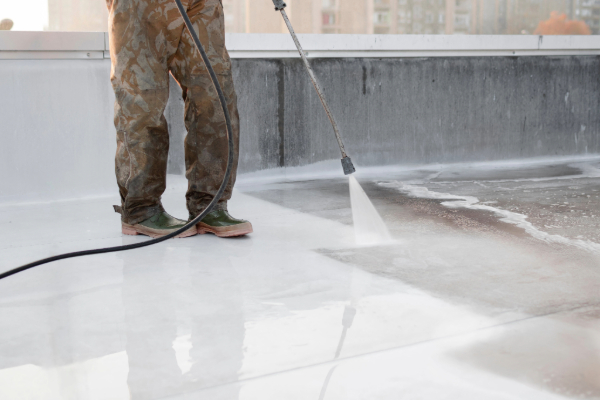The Importance of Surface Prep for Your Waterproofing Project
What's the secret to a long-lasting, effective waterproof coating? Two words: surface preparation. To ensure a properly adhered waterproof seal, you need to take the time to prepare the material's surface first. The steps you take and the products you use to prep the surface depend on the material, but there are a few basics you won't want to skip.

What Is Surface Prep?
Think of installing a waterproof coating as giving a wall, floor or other surface a second layer of skin. The protective coating, or "skin," keeps moisture out, prolonging the life of a building and reducing the need for regular repairs.
Surface preparation is the process of getting the substrate ready for a coating. It's necessary to ensure that the material fully adheres to the substrate surface. Surface preparation may seem like a needless extra step that could be skipped to save time and money, but if you skip it, you'll most likely have to remove a de-laminated coating and reapply the material once proper prearation has taken place. This is a large and unneeded expense for contractors.
There are several variables you can't control during a project, such as exterior humidity, the weather, material cost and supply chain issues. Surface prep is one factor you can control — a step you can take to ensure your project's durability.
Surface Preparation Steps
How exactly you go about preparing a surface before waterproofing depends in large part on the material. While the exact processes you'll use will vary based on whether you're prepping concrete, metal or brick, the three basic steps — cleaning, drying and priming — remain the same.
Cleaning
If you've ever put a piece of tape on a dusty box and had the tape peel away without sticking, you've seen why cleaning a surface before putting anything on it is important. Dust, debris and grease and other surface contaminants can all keep a waterproofing coating from fully adhering to a surface. So can any flakes or pieces of the material itself.
How you clean depends on the material and the mess. You may need to abrade the surface to remove previously applied coating or stuck-on debris. Vacuuming will help remove dust and debris, while a bleach solution can help remove mold or mildew.
In addition to cleaning, you may need to repair the surface before continuing. This includes, removing and replacing any unsound substrate, patching any holes and fill in any cracks or other surface defects to create an even, sound surface.
Drying
Before applying the waterproofing material, you need to make sure the surface is completely dry. Any moisture that ends up trapped between the surface and the coating will keep the coating from adhering fully, and can lead to blisters or bubbles in the coating, as well as possible curing issues.
Priming
While there are systems on the market are considered self-priming, many waterproof coating systems require a primer to adequately bond to a substrate. These primers are designed to provide additional adhesive capabilities to the system to ensure a long lasting bond.
Choosing the Right Materials
Whether you're coating concrete, metal or another building material, you need the right tools and materials to do the job right. QXO's waterproofing team of technical professionals can help you choose the cleaning products, primers and waterproofing materials that will lead to lasting results.
Lay the right groundwork for durable results — dedicate time to surface prep before any waterproofing project.